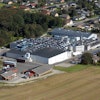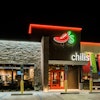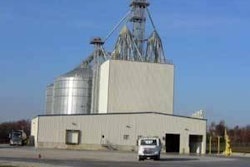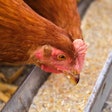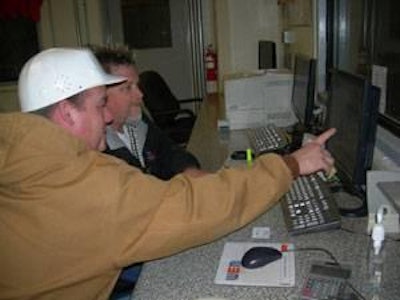
NuWest Milling of Hughson, Calif., recently celebrated their 10th year of operation. The facility supplies egg-production feed to the three founding partners in addition to providing specialty diets to outside clients.
The enterprise was established following recognition of a common need by Valley Fresh Feeds Inc, J.S. West and Gemperle Enterprises, each operating their own feed mills in a two-county area. The three long-established egg production companies of almost equal size faced similar problems relating to replacement of obsolete facilities, acquisition of ingredients and minimizing both capital and operating costs.
Their joint venture in marketing and further processing eggs, operating as NuCal Foods in Ripon, Calif., demonstrated the synergy and benefits from cooperation. The principle was extended to feed production. Initially the joint venture sourced and handled ingredients through an association with a large dairy concern, further justifying the decision to erect a feed mill to supply their requirements.
Implementing the NuWest Milling project
Planning of the project commenced in early 1997 and the first phase of the operation came on line in November 2000. The Board of NuWest appointed Rich Hoch, a veteran feed mill manager from J.S.West, to head the project. After extensive discussions, T. E. Ibberson was selected as the prime contractor.
Hoch based his decision on the strength of the company in project design and implementation and an ability to provide customization to suit clients’ requirements. Although Ibberson did not provide the lowest bid, design features and a comprehensive approach to integrating infrastructure together with required civil and mechanical components placed the contractor at advantage over competitors. Each of the component systems and subcontractors was subjected to at least two comparison bids together with technical and logistic evaluation in relation to the comprehensive plan for the project.
The permitting process was a significant hurdle although the project was supported strongly by Stanislaus County. As with any large-scale agricultural project there was some opposition based on the perceptions of noise, dust and congestion. NuWest was able to provide satisfactory responses to the issues raised and the necessary construction and environmental permits were awarded by county and state authorities.
Construction commenced in May 1999 and continued through 2000. An important component of the project was the installation of a suitable rail siding to accommodate 110-car corn shuttles and 25 car units of both Canola and Soybean Meal with a master plan calling for subsequent expansion. The terminal can can accommodate up to 150-cars. This naturally benefits Burlington Northern, which was instrumental in promoting the initial project based on their ability to utilize rolling stock and to operate efficiently. Naturally this is reflected in benefits to NuWest with regards to transport costs.
With expansion of the capacity to receive 100-car shipments of soybean meal, grain storage was increased by erecting both fabricated metal and concrete silos with required conveyers. At the present time, NuWest stores 22,500 tons of corn and up to 15,000 tons of bulk ingredients in bins within the mill structure. A more recent expansion provides 4,000 tons storage for DDGS which is now being incorporated into hen diets.
Operations
The mill functions with a seven-ton, dual-shaft, dual-ribbon mixer. Minor ingredients are delivered to the mixer through a bin system which can accommodate totes and a second micro-ingredient system with multiple bins is equipped to dispense additives. The mill can function, with appropriate scheduling, at an output rate of 85 tons per hour.
With the range of ingredients incorporated into layer feeds, the plant operates with a 3-minute mixing time and a five-minute batch cycle. According to Geoff Holland, the production manager, the facility operates a solid two-shift, five-day week with provision for part of a sixth day as required by customer needs.
Each of the three egg-producing companies operates their own delivery trailers contributing to enhanced bio-security. An efficient spray washer was installed in the initial phase to decontaminate all bulk trailers and service vehicles on entry to the mill. The 55-acre site is fenced and secured and all buildings are under video surveillance with limited entry.
The current production mix includes 85% layer diets with the remainder comprising specialty mixes for poultry and pet food clients and smaller-capacity producers of eggs and broilers within the area of operation of the mill.
At the outset, NuWest adopted a culture of quality based on receiving and mixing of ingredients and in the operation of the mill. The facility is characterized by the virtual absence of dust both inside the mill and around the exterior. An intensive program to exclude and suppress rodents is in operation together with a continual emphasis on hygiene and bio-security, even to the extent of disinfecting hands and shoes on entry to the mill.
The in-plant laboratory is equipped with a Foss NIR analyzer and the feed quality technician regularly screens ingredients for significant mycotoxins including aflatoxin and DON which are obviously a concern to clients. Special assays are conducted by state and commercial laboratories to validate assays conducted in the mill laboratory. According to Holland, software and procedures are tweaked at regular intervals but major upgrades are completed at approximately five-year periods by WEM.
Safety is an important consideration involving extensive orientation and training of new hires together with monthly safety audits concentrating on various aspects of operation. There have been no significant lost-time events over the past decade attesting to a combination of effective design and installation of equipment together with training and supervision of personnel and providing personal protective gear.
In 2008 the California Department of Agriculture awarded NuWest their Safe Animal Feed certification and the mill operates according to extensive standard operating procedures, equivalent to HACCP. The facility is subjected to regular audits by the Food and Drug Administration, the California Department of Food and Agriculture and third-party reviews by Eggland’s Best.
Hoch is active in all aspects of the operation and constantly motivates the 16-person team to produce “the best product possible.”
The future
Since start-up, the off-take of feed among the three major shareholders has remained relatively constant. To achieve growth for NuWest, Hoch has had to implement an entrepreneurial program of acquiring tonnage from outside the pool of the shareholders. This is expressed in his approach to marketing that NuWest “is not just chicken feed.”
Future expansion will be limited by the uncertainty following the 2008 passage of California Proposition 2. Feed production will certainly not be a restraint to future expansion of egg production. Currently nest- run eggs are imported into the Northern California region to supply demand which could be filled by local production.
Since there is no clear definition of the meaning of Proposition 2, egg producers including the three owners of NuWest have shelved expansion programs. J. S.West has however moved forward with an enriched cage system in a demonstration project based on European hatching style cages. This company recently initiated legal action to force a clear definition of the limits and standards required in terms of Proposition 2. Successful resolution of the current impasse could have a profound effect on future expansion and operation of NuWest Milling.

